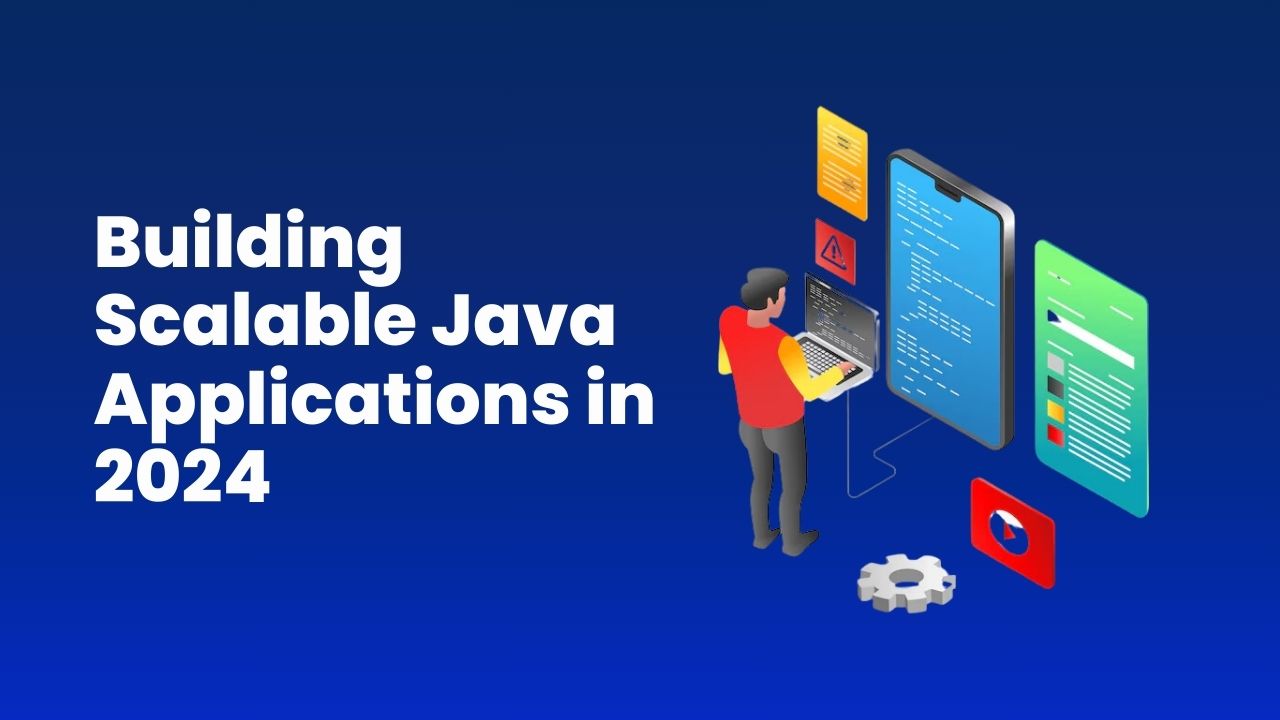In today’s ever-evolving digital landscape, building applications that can handle increasing demands is crucial. Java, with its long-standing reputation for robustness and scalability, remains a top choice for developing enterprise-grade applications. This article explores key considerations for modern development teams building scalable Java applications in 2024.
Why Java for Scalable Applications?
Java boasts several features that make it ideal for building scalable applications:
- Platform Independence: Java applications run seamlessly across various operating systems, ensuring broader reach and easier deployment.
- Object-Oriented Programming: Java’s object-oriented approach promotes code reusability and modularity, simplifying maintenance and scaling.
- Automatic Memory Management: Java’s garbage collection feature automatically manages memory allocation and deallocation, minimizing memory leaks and application crashes.
- Rich Ecosystem of Libraries and Frameworks: Java offers a vast ecosystem of open-source libraries and frameworks, providing readily available solutions for common functionalities and simplifying development.
- Strong Community Support: Java enjoys a large and active developer community, offering extensive documentation, tutorials, and ongoing support.
Key Considerations for Scalable Java Applications
Building applications that can handle a growing user base and data volume requires careful planning and implementation. Here are some key areas to consider:
- Microservices Architecture: Break down the application into smaller, independent services that communicate with each other via APIs. This promotes modularity and allows individual services to scale independently.
- Cloud-Native Development: Leverage cloud platforms for deploying and scaling Java applications. Cloud infrastructure offers on-demand resources and automatic scaling capabilities.
- Performance Optimization: Focus on optimizing application performance to handle increased traffic. Techniques include code profiling, efficient data structures, and caching mechanisms.
- Database Selection: Choose a database solution that can scale effectively with your application’s needs. Consider NoSQL databases for handling large and unstructured data sets.
- Monitoring and Logging: Implement robust monitoring and logging systems to track application performance, identify bottlenecks, and troubleshoot issues proactively.
- Continuous Integration and Delivery (CI/CD): Automate the build, testing, and deployment process using CI/CD tools. This ensures faster development cycles and smoother deployments.
Examples of Scalable Java Applications:
- Netflix: Relies heavily on microservices architecture and cloud infrastructure to handle millions of concurrent users streaming content globally.
- LinkedIn: Employs a complex Java-based backend to manage user profiles, connections, and massive amounts of professional data.
- Uber: Utilizes Java for its backend infrastructure, handling real-time location tracking, ride requests, and payment processing for a vast user base.
Modern Development Teams and Scalable Java Applications
Modern development teams face unique challenges when building scalable Java applications:
- Maintaining Code Quality: With complex architectures and growing codebases, maintaining code quality and consistency is essential.
- Security Concerns: Security vulnerabilities can be exploited in large-scale applications. Developers must prioritize secure coding practices and regular security audits.
- Finding Skilled Java Developers: The demand for experienced Java developers remains high. Development teams might need to explore options like Hiring Dedicated Java Developers or Outsourcing Java Development.
Hiring Dedicated Java Developers:
Building an in-house team of experienced Java developers offers direct control over the development process. This approach is ideal for large organizations with the resources to manage a dedicated development team.
Outsourcing Java Development:
Outsourcing Java development to a reputable software development company provides access to a wider pool of skilled developers at a potentially lower cost. This option allows organizations to focus on core competencies while leveraging external expertise for IT development needs.
Building Scalable Java Applications: A Collaborative Approach
The success of building scalable Java applications hinges on a collaborative approach:
- Communication and Collaboration: Effective communication between developers, architects, and stakeholders ensures everyone is aligned with project goals and technical decisions.
- Adopting Modern Development Practices: Leverage modern development practices like Agile methodology and DevOps to ensure continuous improvement and rapid iteration cycles.
- Testing and Quality Assurance: Rigorous testing throughout the development lifecycle is crucial for identifying and fixing bugs before deployment.
Conclusion
Java remains a powerful language for building robust and scalable applications. By understanding the key considerations for scalability, adopting modern development practices, and fostering a collaborative environment, development teams can create successful Java applications that can thrive in today’s demanding digital landscape.
Getting Started with Scalable Java Development
If you’re planning to build a scalable Java application, consider these next steps:
- Clearly Define Your Needs: Define the application’s functionalities, user base, and projected growth to guide your architecture decisions.
- Evaluate Your Team’s Skills: Assess your development team’s skills and experience with Java and modern development practices. Consider Hiring Dedicated Java Developers if needed to fill skill gaps.
- Research Cloud Platforms and Tools: Explore cloud platforms like AWS, Azure, or GCP for deployment and scaling options. Research CI/CD tools and monitoring solutions to streamline development and operations.
- Choose the Right Database: Select a database solution that can scale effectively with your application’s data volume and access patterns. Consider NoSQL options for unstructured data or high-performance needs.
Building a Scalable Java application is a continuous process. By following these considerations, adopting modern practices, and prioritizing collaboration, you can empower your development team to create successful and future-proof Java applications.
